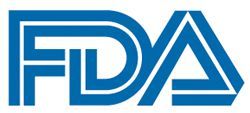News
Article
FDA Approves Crovalimab for Paroxysmal Nocturnal Hemoglobinuria
Author(s):
Key Takeaways
- Crovalimab-akkz (Piasky) is FDA-approved for PNH in patients aged 13+ and weighing ≥40 kg.
- Phase 3 COMMODORE 2 trial showed crovalimab's non-inferiority to eculizumab in hemolysis control and RBC transfusion avoidance.
The FDA has approved crovalimab for patients 13 years of age and older with paroxysmal nocturnal hemoglobinuria and a body weight of at least 40 kg.
FDA

The FDA has approved crovalimab-akkz (Piasky) for the treatment of adult and pediatric patients 13 years of age and older with paroxysmal nocturnal hemoglobinuria (PNH) and a body weight of at least 40 kg.1
The regulatory decision was supported by data from the phase 3 COMMODORE 2 trial (NCT04434092), which showed that the rate of hemolysis control from week 5 to week 25 was achieved was 79.3% (95% CI, 72.9%-84.5%) among patients treated with crovalimab (n = 134) compared with 79.0% (95% CI, 69.7%-86.0%) for those given eculizumab (n = 69; odds ratio [OR], 1.02; 95% CI, 0.57-1.82).
Additionally, 65.7% (9%% CI, 56.9%-73.5%) of patients in the crovalimab arm avoided red blood cell (RBC) transfusions from baseline to week 25 vs 68.1% (95% CI, 55.7%-78.5%) for those in the eculizumab arm (difference, –2.8; 95% CI, –15.7 to 11.1).
The rates of breakthrough hemolysis were 10.4% (95% CI, 6.0%-17.2%) in the crovalimab arm vs 14.5% (95% CI, 7.5%-25.5%) in the eculizumab arm (difference, –3.9%; 95% CI, –14.8% to 5.3%). The proportions of patients with stabilized hemoglobin were 63.4% (95% CI, 54.6%-71.5%) and 60.9% (95% CI, 48.4%-72.2%) for crovalimab and eculizumab, respectively (difference, 2.2%; 95% CI, –11.4% to 16.3%).
COMMODORE 2 was a randomized, open-label, active-controlled, multicenter, non-inferiority study that enrolled patients with documented PNH per high-sensitivity flow cytometry who had a body weight of at least 40 kg at screening. Patients needed to have a lactate dehydrogenase (LDH) level at least 2 times the upper limit of normal (ULN) per local assessment. To enroll, vaccination against Neisseria meningitidis serotypes A, C, W, and Y within 3 years of study treatment was required. If patients were unvaccinated, vaccination needed to be administered no later than 1 week after first study treatment.2
Key exclusion criteria consisted of current or previous treatment with a complement inhibitor; a history of allogeneic bone marrow transplant; a history of Neisseria meningitidis infection within 6 months prior to screening and up to first study treatment; a history of Revised International Prognostic Scoring System intermediate-, high- or, very high–risk myelodysplastic syndrome.
Patients were randomly assigned 2:1 to receive crovalimab or eculizumab. In the experimental arm, crovalimab was given at 1,000 mg (for patients weighing ≥40 kg to <100 kg) or 1,500 mg (for patients weighing >100 kg) on day 1, followed by weekly subcutaneous loading doses of 340 mg on days 2, 8, 15 and 22. Maintenance crovalimab was administered once every 4 weeks starting on day 29 at 680 mg (for patients weighing ≥40 kg to <100 kg) or 1,020 mg (for patients weighing ≥100 kg).1 Eculizumab was given at 600 mg on days 1, 8, 15, and 22, followed by maintenance eculizumab at 900 mg on day 29 and once every 2 weeks thereafter.2
Treatment in each arm lasted for 24 weeks, and patients could then continue or switch to crovalimab during an extension period.1
The study’s primary end points were the rate of patients who avoided RBC transfusions from baseline to week 25, and the proportion of patients who experienced hemolysis control from week 5 to 25. Secondary end points included the rate of breakthrough hemolysis; the proportion of patients with stable hemoglobin; mean change in fatigue; and safety.2
Regarding safety, 6% of patients treated in the crovalimab arm (n = 135) experienced serious adverse effects (AEs), which included epistaxis (n = 2), pneumonia (n = 2), infusion-related reaction (n = 1), pyelonephritis (n = 1), COVID-19 (n = 1), and hypovolemic shock (n = 1).1
The most common AEs reported during the study included infusion-related reaction (crovalimab, 16%; eculizumab, 13%), respiratory tract infection (13%l 20%), viral infection (11%; 7%), hyperuricemia (8%; 9%), headache (8%; 6%), diarrhea (7%; 1%), and injection-related reaction (6%; 0%).
References
- Piasky. Prescribing information. June 2024. Accessed June 24, 2024. https://www.accessdata.fda.gov/drugsatfda_docs/label/2024/761388s000lbl.pdf
- A phase III study evaluating the efficacy and safety of crovalimab versus eculizumab in participants with paroxysmal nocturnal hemoglobinuria (PNH) not previously treated with complement inhibitors (COMMODORE 2). ClinicalTrials.gov. Updated May 16, 2024. Accessed June 24, 2024. https://clinicaltrials.gov/study/NCT04434092









